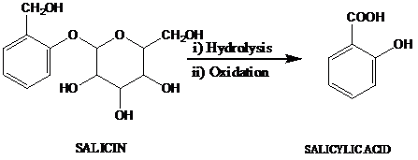Paracetamol: Drug Stories Part-III
Discovery of Acetaminophen
Acetamiophen
is an analgesic and antipyretic agent with no anti-inflammatory action. Discovery
of acetaminophen, more commonly known as paracetamol makes an interesting story.
Discovery of paracetamol can be said to be a culmination of Serendipity,
scientific acumen and diligence.
Industrial
revolution brought a huge surge in commercial synthesis of many compounds,
especially the dyes. There being a limited knowledge about biology, and a booming
chemical industry led to testing of numerous compounds for various activities. The
choice of activity to be studied was based more on expectations rather than
rationale.
Under
these circumstances, Arnold Cahn and Paul Hepp, sometime around 1886 at the
University of Strasbourg had been involved in testing a variety of chemicals (mostly
dyes and products from coal tar processing) against intestinal worms. One of
these was naphthalene. Experiencing little success with other compounds, they
however noted that a patient having a number of problems besides worm
infestation, when administered naphthalene displayed a surprising yet
unreported antipyretic (lowering of body temperature) effect. On further
investigation, it was however revealed that the pharmacy had supplied their
patient with acetanilide in place of naphthalene!
Acetanilide
is a solid with a near-identical crystalline appearance to naphthalene. This
chance discovery was duly published by Cahn and Hepp in 1886. The following
year acetanilide was manufactured and marketed as Antifebrin. This antipyretic was effective and remarkably cheap
too. Its use continued in a few over-the-counter preparations until 1971, when
it came to light that patients using antifebrin were turning blue! Their cyanosis was attributed to
methemoglobinemia (a form of cyanosis caused by oxidation of the Fe(II) in
haemoglobin to Fe(III), decreasing the oxygen
carrying capacity of iron) resulting from aniline, a metabolite of acetanilide.
It
was soon replaced by a molecule called phenacetin.
As
mentioned earlier, chemical industry was booming and the manufacturers were
keen to find medicinal uses for their chemicals so that the business could
become more lucrative. Thus, in one such attempt, a challenge was put forth by dyestuffs
manufacturer Friedrich Bayer & Co to come up with an exploitable use for
4-nitrophenol, a side product available in vast amounts from its synthesis of
the blue dye Benzazurin G that was being manufactured in their facility.
Oscar
Hinsberg reported the synthesis of a compound which possessed all the
advantages of antipyrin (a popular drug at that time) and antifebrin and
(apparently) none of their disadvantages. A great chemist, he converted 4-nitrophenol
in three steps, that is, reduction of -NO2 to -NH2;
ethylation of the OH group; and finally acylation of the NH2 group to
give a well-tolerated antipyretic and analgesic named phenacetin.
This
new product, phenacetin, enjoyed much popularity for almost a century as an ‘over-the-counter’
remedy often combined in tablets with caffeine and aspirin (APC).
APC
was a very commonly used combination for headaches and hangovers. However, in
the 1960s a number of studies suggested that phenacetin might be causing renal
failure and renal tumours in some heavy users. In 1980 phenacetin was banned in
the UK. A few years later it was banned in India too.
Since
it was a common practice to synthesise several analogues of an active molecule
in order to find a better alternative, a number of analogues of phenacetin were
prepared and one such derivative N-(4-hydroxyphenyl)ethanamide (later named
paracetamol) was discovered and evaluated in 1893.
Germany's
leading physiologist, Joseph von Mering was entrusted with the clinical trials
of the drug by Bayer. Von Mering was unhappy with the results of his clinical
trials because, while it was an effective analgesic and antipyretic, in some
cases its use was associated with the development of methaemoglobinaemia (the
kind observed with antifibrin). These observations made Bayer abandon
paracetamol as a promising analgesic molecule.
However,
interest in paracetamol was revived again during 20th century investigations performed
to understand the mode of action of phenacetin. During one such study by Yale physiologists
David Lester and Leon Greenberg in 1947 on the blood, plasma and urine samples
of patients administered 1 g of phaenacetin, they reported that N-acetyl-p-aminophenol
and its 'hydroxy conjugates' that is, sulfate and glucoronide conjugates were
the major metabolites in blood and plasma. These conjugates are harmless and
excreted through urine. No free aminophenol was detected in urine samples.
Thus, they concluded that acetanilide is first oxidized to p-acetamidophenol and then to its hydroxyl conjugates.
This
is especially impressive for a molecule whose mechanism of action has still not
been unequivocally established! Paracetamol is generally considered to be a
weak inhibitor of the synthesis of prostaglandins (PGs). However, the in vivo
effects of paracetamol are similar to those of the selective cyclooxygenase-2
(COX-2) inhibitors. Recently
some research points out towards the inhibition of cox-3 enzyme as a possible
explanation for its analgesic action.










Comments
Post a Comment